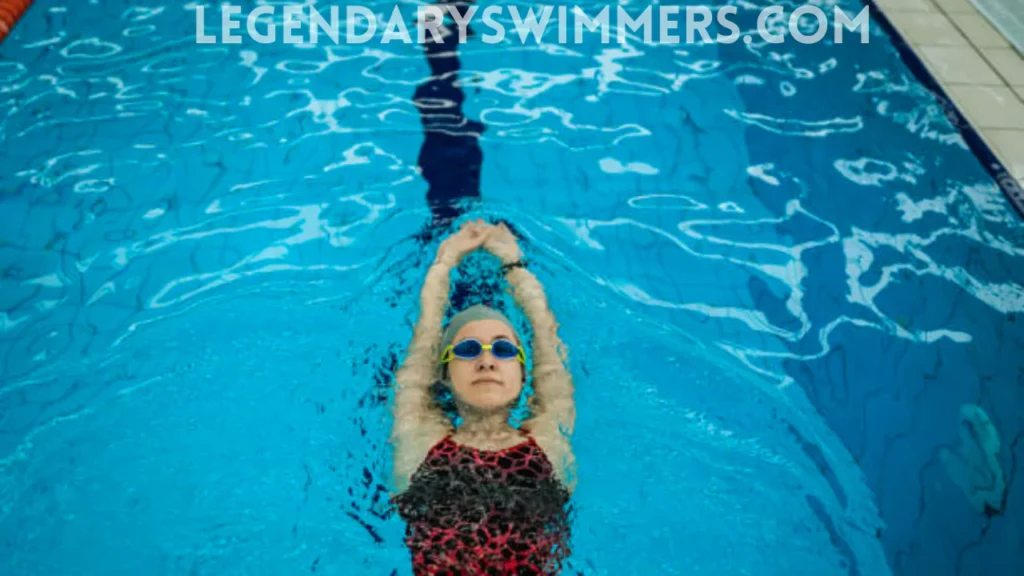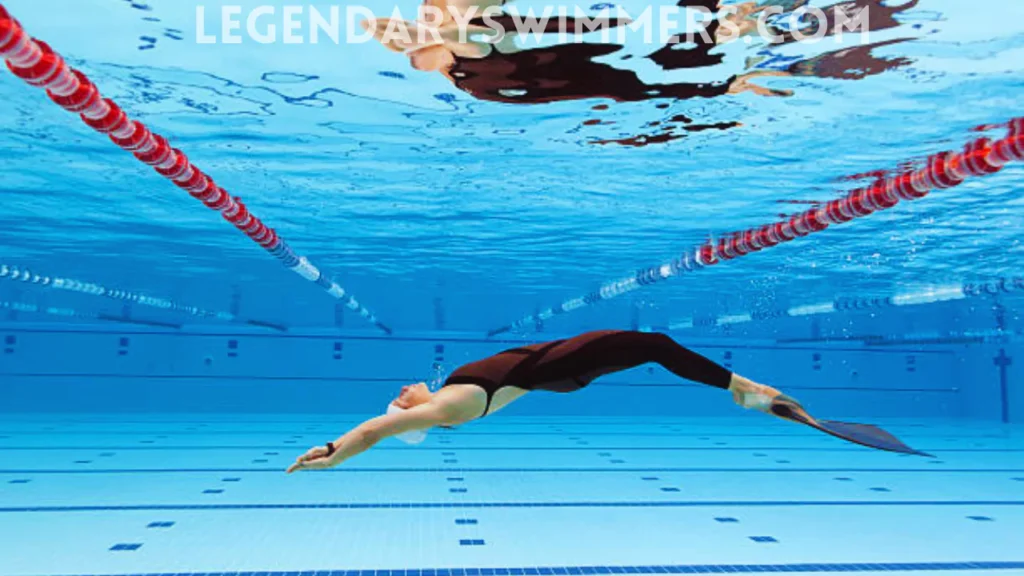
How to avoid Swimming Related Headaches- Before or After
- Updated:
Have you ever felt a pasting headache during or after swimming? That irritating pain can collapse what should be an enjoyable, refreshing experience. Some swimmers are responsible for close-fitting swim caps or goggles. Others point to dehydration or over-application.
No matter the reason, headaches after swimming are disappointing; fortunately, they’re frequently unnecessary and treatable. How about we plunge into the most widely recognized swimming-related headaches, their causes, and down-to-earth alleviation techniques? External Compression Headache(ECH) One of the most well-known migraines among swimmers is external Pressure Compression pain. It’s brought about by the tension of tight goggles or swim covers on your scalp and temple.
External Compression Headache (ECH)
One of the most widely recognized headaches among swimmers is External Compression Headache. It’s brought about by the strain of tight goggles or swim covers on your scalp and brow. The pain from ECH usually fades within an hour after removing the source of pressure. However, wearing tight gear for too long can worsen the headache, sometimes even triggering a migraine.
Statistics: A 2017 study by the American Headache Society found that about 20% of swimmers report experiencing pressure headaches from swim gear, with an increase in discomfort among competitive swimmers who wear tight goggles.
How to Avoid ECH
1. Invest in Comfortable Goggles:
Look for goggles that balance comfort and functionality. Options like Zoggs Predator Goggles or Speedo Futura BioFUSE Goggles have soft rubber seals that reduce pressure around the eyes and forehead. If racing goggles are a must for you, try loosening the straps or limiting how long you wear them.
2. Choose the Right Swim Cap:
A swim cap that’s too tight can be a major culprit. If your cap feels restrictive, consider switching to one made from softer, more flexible materials. Taking off your swim cap periodically can also help relieve the pressure.
Migraine
Swimming can initiate migraines for some people. Contrasting ECH, migraines are more penetrating and come with symptoms like nausea, sensitivity to light, and extended excruciating pain. This can make it challenging to continue swimming—or even functioning for the rest of the day.
Statistics: According to research, around 38% of people with chronic migraines report experiencing migraines triggered by physical activity, meaning exercise can act as a trigger for a significant portion of migraine sufferers.
How to Treat a Migraine
- Rest in a Dark, Quiet Space:
Migraines thrive on triggers like light and noise. Find a calm environment to rest until the pain subsides. - Consult a Doctor for Severe Cases:
If migraines are frequent or unbearable, speak with a healthcare professional. They may prescribe medication or offer other solutions.
Sinus Headaches
Have you ever had a headache after swimming in a chlorinated pool? A sinus headache happens when microorganisms or aggravations like chlorine arouse the nasal cavity. Plunging profoundly can likewise build your gamble because of tension changes underwater.
The studies provide evidence that chlorinated water might lead to nasal dysfunction in competitive swimmers, particularly by affecting mucociliary transport and olfactory sensitivity. [Source: PMID: 22888487 DOI: 10.4193/Rhino11.024]
How to Treat Sinus Headaches:
- Use Saline Nasal Spray:
A saline spray flushes out irritants, helping to reduce inflammation in your sinuses. - Wear a Nose Clip:
Nose clips prevent water from entering your nasal passages, reducing the chances of irritation. - Avoid Deep Diving:
Pressure changes from deep diving can worsen sinus headaches. If diving is your passion, limit the number of dives and carry over-the-counter remedies for relief.
If your sinus headaches are severe or persistent, consult a doctor. They can rule out infections and recommend treatments tailored to your needs.
Swimmer’s Ear
Swimmer’s Ear isn’t just about ear pain— it can likewise prompt headaches. This condition happens when water gets caught in your ear canal, establishing a climate for microbes to develop. Side effects incorporate tingling, redness, enlarging, and a sensation of fluid in the ear.
How to Treat Swimmer’s Ear:
- Use Antibiotic Ear Drops:
For infections, a doctor may prescribe antibiotic drops to clear up the issue. - Consult Your Doctor:
Avoid DIY remedies without professional advice. Your doctor can confirm the diagnosis and recommend the best treatment.
How to Prevent Swimmer’s Ear:
- Wear Specialized Earplugs:
Products like Speedo Biofuse Aquatic Earplugs create a barrier that keeps water out of your ears. - Apply Water-Resistant Coatings:
Consider using Earol Swim Oil or similar products to protect your ear canal while swimming.
Other Causes of Swimming-Related Headaches
Sometimes, the culprit isn’t your gear or the water—it’s how you swim. Dehydration, improper breathing, and over-exertion are all potential triggers.
Dehydration
Swimming won’t make you sweat like running, yet you’re losing water. Drying out can prompt pulsating headaches that continue long after your swim.
Solution
Drink plenty of water before, during, and after your swim. Keep a water bottle poolside and sip regularly.
Improper Breathing
Holding your breath too long or breathing incorrectly can limit oxygen flow to your brain, leading to headaches.
Solution
Work on your breathing technique with the help of a coach or experienced swimmer. Proper technique can prevent headaches and improve your swimming efficiency.
Over-Exertion
Pushing your body too hard in the water can strain your muscles and cause headaches.
Solution
Listen to your body. Take breaks when you feel fatigued and avoid swimming in extreme heat or high altitudes, which can exacerbate over-exertion headaches.
When to Seek Professional Help
While most swimming-related migraines are innocuous and impermanent, diligent or extreme agony should not be overlooked. If your headache disrupts your day-to-day existence, counsel a medical services supplier. They can rule out underlying conditions and guide you on effective treatments.
Whether you’re interested in learning about the history of swimming, finding training tips, or simply appreciating the greatness of iconic swimmers, Legendary Swimmers is your ultimate resource.
FAQs
What is External Compression Headache (ECH) and how can I avoid it?
External Compression Headache (ECH) occurs when tight goggles or swim caps create pressure on your scalp and forehead. To avoid ECH, invest in comfortable, well-fitting goggles and swim caps made of softer materials. Loosen straps and avoid wearing tight gear for extended periods.
What are the common symptoms of a swimming-induced migraine?
Swimming-induced migraines can cause intense, penetrating pain, nausea, sensitivity to light, and sometimes vomiting. These migraines are often more severe than regular headaches and can persist even after your swim.
How do I treat a migraine caused by swimming? Resting in a dark, quiet room is key to managing migraines. If migraines persist, it’s essential to consult a healthcare professional, who may prescribe medications or offer other remedies.
What causes sinus headaches after swimming?
Sinus headaches can occur after swimming, especially in chlorinated pools, due to irritation in the nasal passages. Pressure changes from deep diving can also contribute. To treat sinus headaches, consider using saline nasal spray or wearing a nose clip during your swim.
How can I prevent swimmer’s ear headaches?
Swimmer’s ear can lead to both ear pain and headaches. To prevent it, use earplugs designed for swimmers, like Speedo Biofuse Aquatic Earplugs, and apply water-resistant ear oils to protect your ear canal.
How can dehydration cause headaches while swimming?
Dehydration during swimming can cause throbbing headaches since you’re still losing fluids despite not sweating as visibly as in other exercises. To avoid dehydration headaches, drink water before, during, and after swimming sessions.
How can improper breathing lead to headaches in swimmers?
Holding your breath for too long or breathing incorrectly while swimming can limit oxygen flow to your brain, leading to headaches. To prevent this, work on improving your breathing technique and focus on regular, deep breaths while swimming.
Can over-exertion while swimming cause headaches?
Yes, over-exertion can strain your muscles and lead to headaches. It’s important to listen to your body and take breaks when needed, especially when swimming in hot environments or at high altitudes.
When should I see a doctor about my swimming-related headache?
If your headaches are persistent, severe, or affecting your daily activities, it’s important to consult a healthcare provider. They can help rule out any underlying conditions and recommend treatments to alleviate your symptoms.
Are there any tips for preventing headaches during swimming?
Aside from proper hydration, correct breathing, and using well-fitting gear, always take breaks during your swim to prevent over-exertion. Ensuring you swim in a comfortable environment can also help reduce the risk of headaches.
Can I learn swimming techniques from Legendary Swimmers?
Yes! While our focus is on the stories of legendary athletes, we also share valuable tips and advice on swimming techniques, training methods, and mental strategies that can help you improve your own swimming abilities.
References

Natasha Nicole Leyva
Hi, I’m Natasha—swimmer, coach, and aquatic fitness enthusiast. My journey began in New Zealand after a professor recommended swimming to help with a knee injury. The low-impact nature of swimming worked wonders, and it quickly became my favorite form of exercise. This passion grew into a thriving swim academy, and soon, requests for aquatic fitness classes started pouring in. After becoming certified, I realized how powerful water workouts could be for recovery and fitness. Now, I share my expertise here to help others experience the benefits of aquatic movement—whether for recovery, fitness, or fun!







